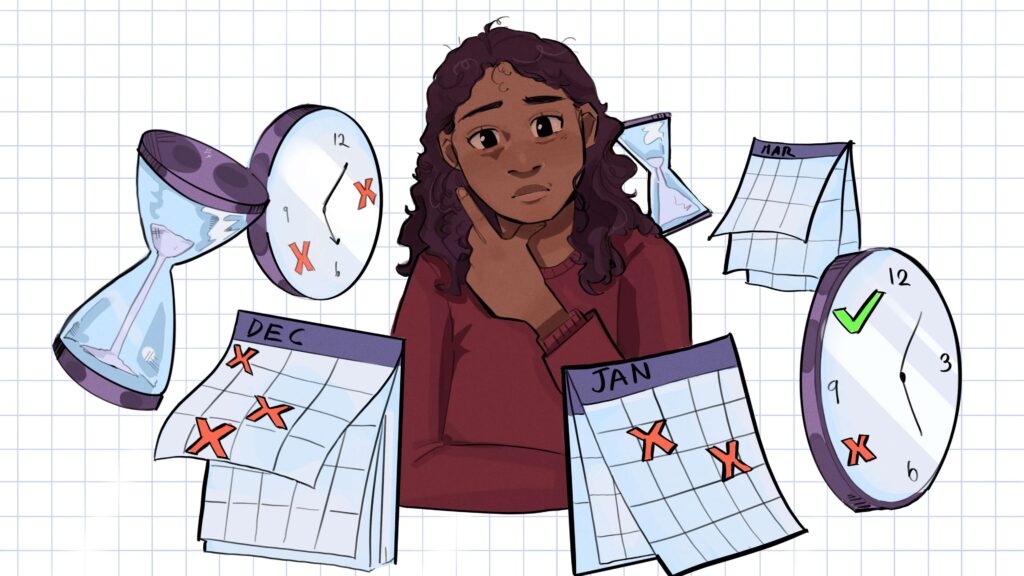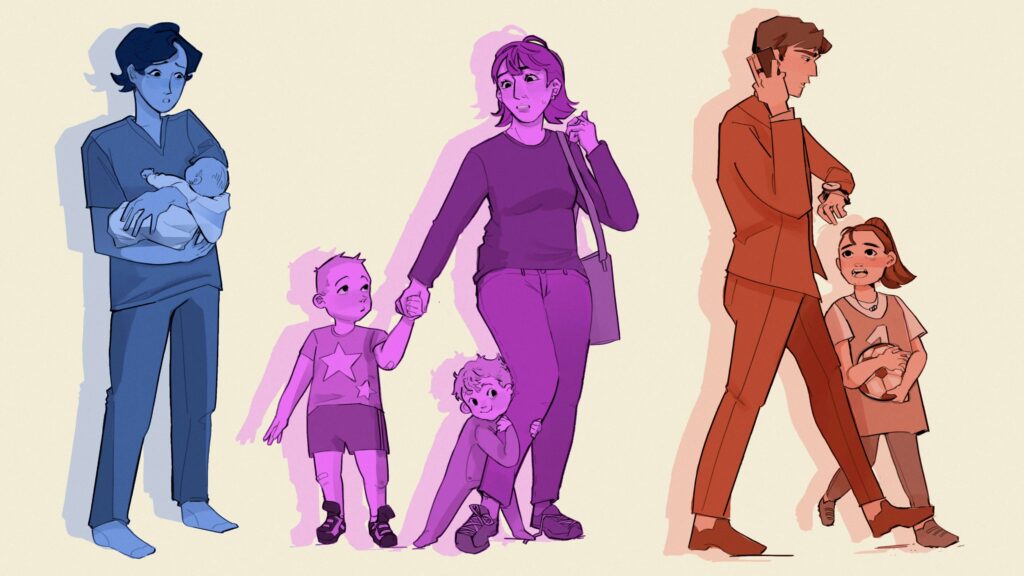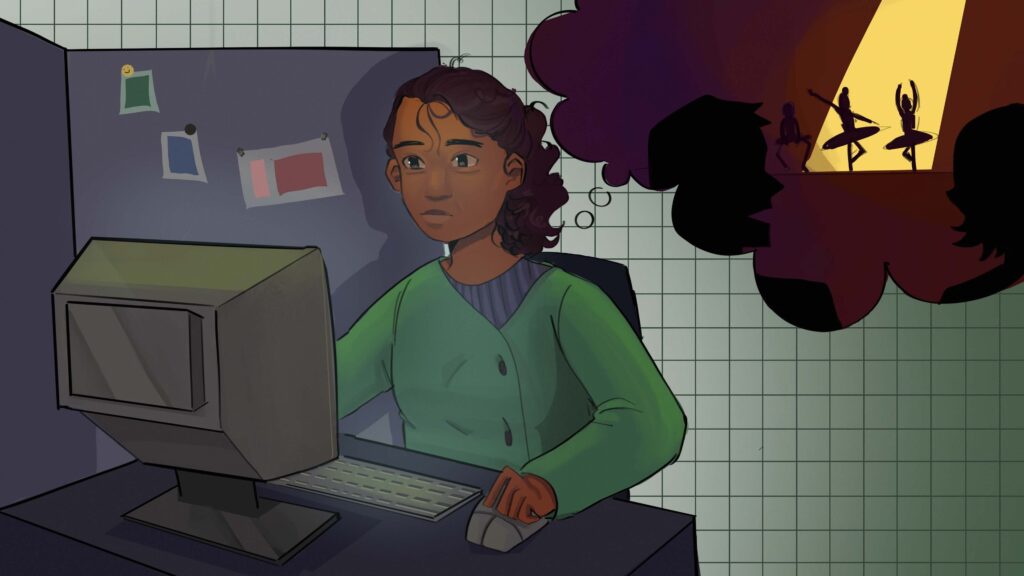Work-life balance is not a thing
Rumors abound regarding the illusion of a ‘work-life balance.’ The idea is that we are supposed to put the demands of life on one side of the scale and the demands at home on the other.

Then, somehow, we are supposed to balance the scale and make it somewhat even. Herein lies the issue: work and life are not separate, and there is no real way to balance the two.
Instead, Cadey promotes a model of work-life integration. The psychologists behind the Cadey platform have come to accept the notion that life is messy.
Instead of trying to balance demands like a bunch of spinning plates, employees feel better and perform better when they have a sense of peace at home.
What comes first?
At Cadey, we say that employee wellness starts at home. Why? Well, what’s the most important thing in a parent’s life? It’s their kids. When their kids are really struggling, of course, employees bring these troubles into the office.
When work-life and home-life collide

I remember my grandma used to say, “When momma ain’t happy, ain’t nobody happy.” I would extend that little piece of wisdom to the workplace in this modern workforce. I remember so many days in my own work life when I was completely distracted by a problem with one of my kids.
Especially once I had teenagers, it was a weekly occurrence that I would show up frazzled to work after a tough incident with my own kids the night before. And I know I am not alone in that experience. Two out of every five workers have kids under age 18, and many of these employees are having trouble at work due to their child’s mental health [3].
You may be familiar with some of these stats if you are an employer or benefits provider at your workplace.
- 30-50% of working parents report that they are thinking about their child’s mental health while they are at work [4]
- 53% of working parents have left work at least once per month due to their children’s mental health [3]
- 54% of working parents report having their workday interrupted to address a mental health issue with their kids [4]
- 71% of working parents said that issues with their child’s mental health or well-being made the stressors at work much more difficult to manage [3]
- 85% of working parents report that they think it’s good to talk about their child’s mental health issues with colleagues at work, but about 20% of them actually do [4]
The illusion of the ‘always on’ employee

Our cell phones are a partial cause of this big collision between work and home life. Moms get calls in the carpool lane that a customer is unhappy at work.
They go to check their phones, which happens over 50 times per day [6]. There are two messages from work and three messages from family members.
What do they do? The best they can.
They try to handle the upset customer, the dog’s grooming appointment, and their mom’s prescription refill on Monday afternoon. Then, later that evening, they try to get some work done so they can jet out for that dance recital tonight.
By Tuesday morning, they are running on empty as they drive off to work.

Child mental health crisis
Making these times infinitely more challenging, the current child mental health crisis is impacting families – and your employees. In post-pandemic times, unprecedented levels of depression, anxiety, and other disorders have surfaced in our nation’s kids. One in six kids has a diagnosed mental or behavioral health disorder [2], and about twice that many are struggling without a diagnosis. These kids are up all night battling these challenges, and your employees are up with them.
Due to these demands at home, about 60% of employees with young children are considering cutting back or quitting their jobs [7,8,9].
Cadey supports parents to find wellness at home…and work
At Cadey, we are your bridge from a better home life to a better work life. We are a lifeline to your employees in finding wellness and work-life integration. When your employees pick up their phones, Cadey is there. With our solutions, employers, employees, and managers can get immediate support for the struggles they bring to work every day.
How do we support you? In 3 important ways.
- First, we offer validated assessments. These immediately pinpoint the child’s needs to direct parents right to the resources they need, including Cadey articles, videos, webinars, courses, and recommendations
- Second, we give real-time guidance to employees. We tell employees what to say and do to help their kids right in the moment they need it. We help them find peace and wellness even in the face of intense demands at home and work.
- Third, we save your employees thousands of dollars and countless hours waiting for answers.
See it for yourself
In our demo calls, we crack open our award-winning Cadey app for you. It includes videos, webinars, articles, and courses so your employees can get fast help on their own schedule.
By providing employees with this level of support, they know you have their backs. You are creating a culture of safety where your employees can perform at their very best. Book a demo to learn how to get Cadey for your employees.
References
[1] Haan, Katherine. Remote work statistics and trends in 2024. Forbes.
[2] Daniel G. Whitney, PhD, and Mark D. Peterson, PhD, “US National and State-Level Prevalence of Mental Health Disorders and Disparities of Mental Health Care Use in Children,” JAMA Pediatrics, 173(4), 389-391, Feb. 11, 2019.
[3] Understanding how youth mental health impacts your workforce. Blue Cross Blue Shield. Spring, 2024.
[4] Marti Bledsoe Post, The Great Collide: The Impact of Children’s Mental Health on the Workplace, On Our Sleeves, Spring 2021.
[5] Aaron Terrazas, “Parents Have Returned to the Workforce, But Gains Are Uneven and Challenges Persist,” Glassdoor, Sept. 16, 2022.
[6] Time spent using smartphones: 2024 statistics.
[7] Paige McGlauflin, Joseph Abrams. More than half of employees with children are considering changing jobs to get better childcare benefits. Yahoo Finance. Oct 10, 2023
[8] Leila Schochet. The childcare crisis is keeping women out of the workforce. Cap 20. March 28, 2019.
[9] Kim Parker. Women more than men adjust their careers for family life. Pew Research Center. Oct 1, 2015


